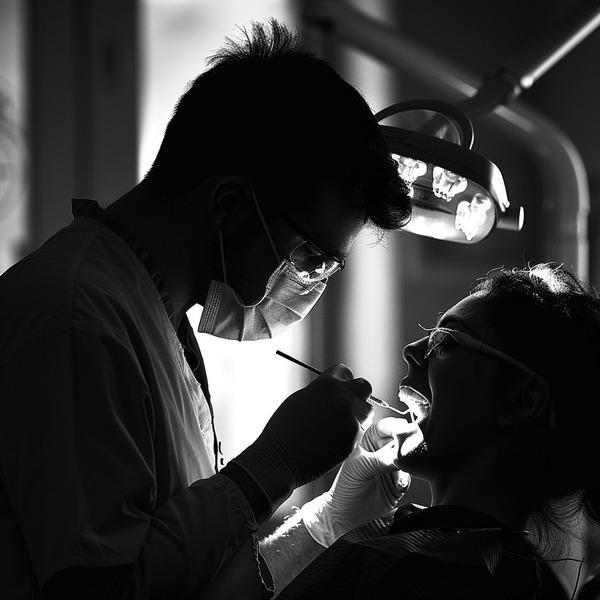Dealing with a knocked-out tooth can be a daunting experience, but prompt and proper action can mean the difference between saving and losing the tooth. Understanding the correct steps immediately after the incident is crucial for optimal dental health. This guide offers clear, concise instructions on handling such emergencies, maximizing the chances of successful reimplantation, and ensuring the best possible outcome for your dental well-being.
A knocked-out tooth, also known as an avulsed tooth, is a serious dental emergency that requires immediate attention. The chances of saving the tooth depend on how quickly and adequately you handle the situation. Here’s a comprehensive step-by-step guide to managing a knocked-out tooth:
1. Retrieve the Tooth Carefully
The first step is to locate the knocked-out tooth. Once you find it, handle it with care. Grasp the tooth by the crown—the part visible in the mouth. Avoid touching the tooth’s root, as it contains sensitive tissues crucial for successful reattachment. Handle the tooth gently to prevent further damage to the root or the tooth’s structure. If you need immediate assistance, seeking professional dental services in NYC can provide the urgent care necessary to preserve the tooth and ensure proper treatment.
2. Clean the Tooth Gently
If the tooth is dirty, it’s essential to clean it gently to remove any debris. Rinse the tooth under cool, running water. Avoid using soap, scrubbing, or other cleaning agents, as these can damage the tooth’s delicate root tissues. You can use a saline solution or milk instead of water if available. Milk is particularly effective because its pH helps preserve the tooth’s vital cells. Do not use tap water as a long-term solution; avoid using alcohol or other disinfectants.
3. Preserve the Tooth
The goal is to keep the tooth moist and viable for reattachment. There are a few methods for preserving the tooth:
-
Reinsertion: Gently place the tooth back into its original socket if possible. Align the tooth correctly and gently push it into place. Bite softly on a clean cloth or gauze to help hold the tooth in position. This method is the most effective for preserving the tooth and promoting reattachment.
-
Storage: If reinsertion is not feasible, store the tooth in a container with a small amount of milk or a saline solution. If neither milk nor saline is available, use clean water temporarily. Ensure the tooth is fully submerged in the liquid to hydrate the root tissues. Avoid letting the tooth dry out, reducing the chances of successful reattachment.
4. Seek Immediate Dental Care
Reliable emergency dental services are crucial for saving a knocked-out tooth. Contact your dentist or an emergency dental clinic as soon as possible. Inform them about the situation and follow their instructions. Ideally, you should reach the dentist within 30 minutes to an hour of the tooth being knocked out to maximize the chances of successful reattachment. Time is of the essence, so do not delay seeking professional help.
5. Manage Pain and Swelling
While waiting to see a dentist, manage any pain and swelling associated with the injury. Over-the-counter pain relievers such as ibuprofen or acetaminophen can help alleviate discomfort. Apply a cold compress to the affected area to reduce swelling and numb the pain. Avoid placing heat or applying direct pressure to the area, which can worsen the injury.
6. Avoid Certain Foods
If you have managed to reinsert the tooth or are waiting for dental treatment, avoiding eating hard, crunchy, or sticky foods that could dislodge the tooth or damage the socket is wise. Stick to soft foods and try to avoid using the affected side of your mouth for chewing. This will help protect the tooth and the surrounding area while you wait for professional care.
7. Follow Up with Your Dentist
Once you receive dental care, follow your dentist’s instructions for aftercare. This may include taking prescribed medications, avoiding certain foods or activities, and scheduling follow-up appointments to monitor the tooth’s condition. Your dentist will assess the success of the reattachment, provide any necessary treatments, and advise on ongoing care to ensure the tooth remains stable and healthy.
8. Consider Long-Term Care
Even if the tooth is successfully reattached, it’s essential to consider long-term care and monitoring. The tooth may require additional treatments, such as root canal therapy, to address any potential damage to the root. Furthermore, when reattachment is not an option or fails over time, dental implants might be considered an alternative solution; you can find more info here. Regular check-ups with your dentist will help ensure that the tooth heals properly and remains functional.
9. Understand Potential Complications
After a knocked-out tooth is reattached, it’s essential to be aware of potential complications that may arise. These can include infection, tooth mobility, or sensitivity. The reattached tooth might require additional treatments to integrate correctly with the surrounding bone and tissue. Your dentist may recommend a root canal if there is damage to the tooth’s nerve or pulp, as well as additional procedures to stabilize the tooth and support healing.
Regular follow-up appointments will help monitor for any signs of complications and ensure the tooth remains healthy and functional.
10. Educate Yourself on Tooth Preservation
Understanding how to prevent tooth avulsion in the future can be valuable. Tooth injuries can occur due to sports, accidents, or trauma so preventive measures can reduce the risk. For instance, wearing a mouthguard during contact sports can protect your teeth from injury.
Additionally, educating yourself and your family about proper dental safety practices can help minimize the chances of experiencing a knocked-out tooth. In an accident, knowing how to handle a knocked-out tooth effectively can make a significant difference in the outcome.
Final Thoughts
Handling a knocked-out tooth effectively involves careful management and prompt action. By retrieving the tooth gently, preserving it properly, and seeking immediate dental care, you improve the chances of successful reattachment and long-term health. Proper pain management and dietary adjustments can help during the waiting period, while following up with your dentist ensures the best outcome for your tooth and oral health. Remember, a quick and effective response is vital to saving a knocked-out tooth and maintaining your smile.





